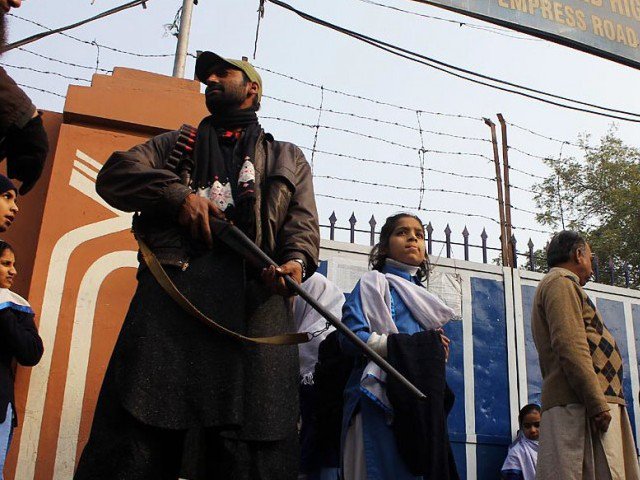

However, what is now happening also appears to be quite juvenile. The Khyber-Pakhtunkhwa government has issued a circular stating that if watchmen of government schools in the province don’t know how to operate a gun, they should bring to school those relatives of theirs who were trained in handling guns to assist them. The circular also talks about the need to put up grills on windows of schools. This completely ridiculous and inadequate approach indicates that the authorities are clueless about the nature of the problem they face. In addition, all the talk of arming teachers and staging mock exercises like the one that recently took place at Karachi University are not the solution either. Indeed, in the year since the APS attack, the federal and provincial authorities should have come up with a comprehensive security plan for educational institutions and then ensured that this was implemented. Of course, it is next to impossible for the authorities to provide fool-proof security to all educational institutions in the country. But neither do educational institutions have the resources to become impregnable fortresses on their own.
Our security agencies must have studied closely all the terror incidents that had taken place in the country until the launch of Operation Zarb-e-Azb and those that have happened since. The pattern of the ones perpetrated before the operation have been different from the ones that have been carried out since. The targets, too, seem to be different. Those that have been committed since the start of the operation have been directed at softer targets, but at the same time have carried enormous propaganda value. Given the nature of these attacks, it seems that terrorists take their time in selecting their targets. Perhaps they make a shortlist of at least three or four targets and then conduct reconnaissance of these over three to four months. During this time, they possibly prepare teams comprising four or five suicide bombers and train them. Once ready, it would be all too easy to provide these bombers with route maps and diagrams of the target building. All this would not be too difficult to evaluate and pre-empt if the law-enforcement apparatus have closely studied the pattern of the previous attacks, the kind of targets they were directed at and the methods of the attacks. This could help pre-empt a significant percentage of terror attacks, and possibly has helped pre-empt such attacks in the past.
However, in order to take care of the rest, we would need a more long-term approach and focus on eliminating the evil ideology that breeds such minds. Besides an effective security infrastructure, we must eliminate the education and ideology that is imparted in our textbooks that has contributed towards radicalisation. In addition, a closing of the foreign tap of terror financing is also needed. Hawala facilitates money laundering with a lot of ease. Under this informal system, money is transferred without actually moving it. No banking system or any paperwork is involved in these transactions. Terrorist groups are said to have infiltrated the Hawala system in order to transfer funds for their activities, especially from the Middle East to Pakistan. Militant groups collect ‘donations’ from overseas Pakistanis in the Persian Gulf and in countries such as the UK and transfer these to their counterparts in Pakistan through Hawala. An estimated $7 billion are said to be entering Pakistan annually through this system. This and other loopholes will have to be plugged if we want to effectively root out terrorism. The current approach adopted by federal and provincial authorities, however, leaves a lot to be desired.
Published in The Express Tribune, February 8th, 2016.
Like Opinion & Editorial on Facebook, follow @ETOpEd on Twitter to receive all updates on all our daily pieces.

















1714029027-0/Tribune-Collage-Feature-Images-(11)1714029027-0-270x192.webp)
1714027629-0/Ranbirtransformation-(1)1714027629-0-270x192.webp)
















COMMENTS (1)
Comments are moderated and generally will be posted if they are on-topic and not abusive.
For more information, please see our Comments FAQ